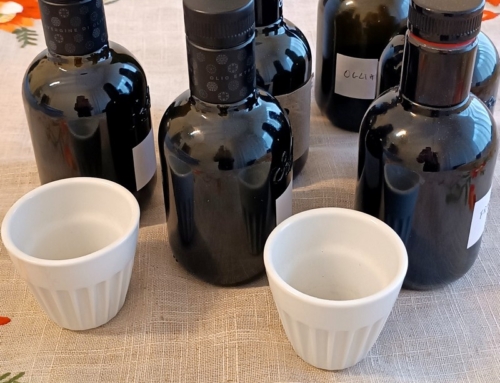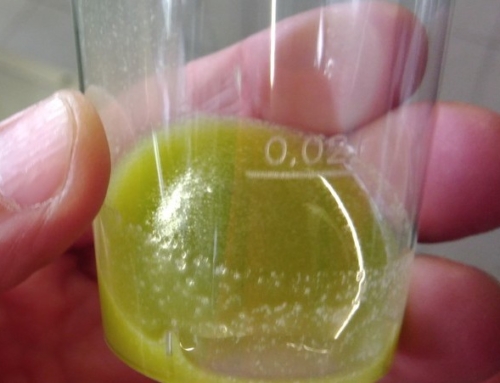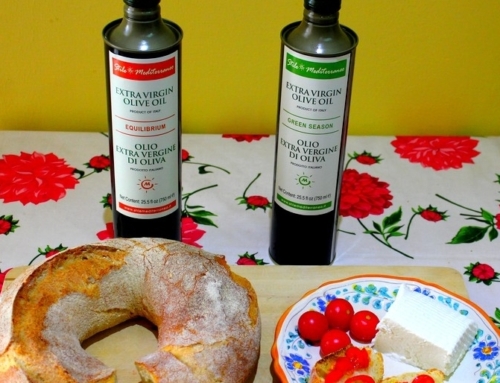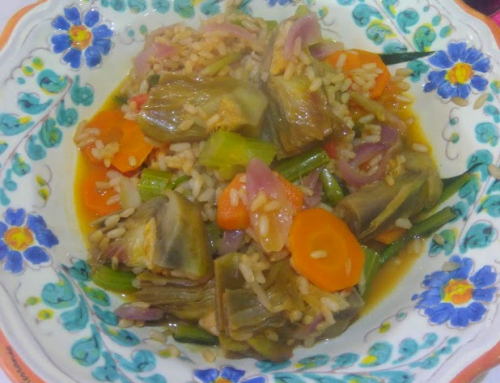Know what you eat!
Not all extra virgn olive oils are the same! I am not talking about adulterated oil.
Even those labeled as “extra virgin olive oils”, and that are true extra virgin, can be completely different one from the other and have completely different flavors as well as health benefits.
Some extra virgin olive oils may be a blend of oils from past years. This is legal (as long as the acidity level is low), but is not so good in terms of taste and flavors. Evoo is not like wine: no “preservatives” are added to extra virgin olive oil to make it last longer.
Moreover, you may have olive oils that are labeled as extra virgin but that are rancid. People can get so used to rancid oil that they like that flavor and taste, which is less bitter than higher quality olive oil.
Finally, some extra virgin olive oils are labeled as “product of ….a specific country“, but their olives or olive oils may come from another different country (not shown on the label).
As it happens for lots of food products, the sentence “product of….a specific country” only tells you where the bottles or jars or packages are filled and labeled before being sold. Whereas that sentence tells you nothing about where the ingredients come from.
Again, this is legal….everywhere!!
This also happens for lots of non-food products. I know a person who sells food supplements and vitamins. She imports vitamins from China (because the production of vitamins polluts a lot, most vitamins are produced in desert areas in China). Then vitamins are put into plastic bottles in her country (which I will not mention) and then those vitamins get sold as “product of ….her country“. Consumers will never know that those expensive vitamins are made in China.
In Europe, a way to solve this origin problem, at least for foods and wines, was to introduce the DOP, DOC, DOCG certificates. When a European food or wine product is certified as DOP or DOC or DOCG you can be 100% sure that the product as well as all the ingredients are made in that specific country in Europe.
But, getting those certificates is very bureaucratic and expensive. So what about products that are not labeled as DOP, DOC, DOCG?
And also, even if you have those certificates, how do you know if the evoo is made with old olive oils?
Two years ago, Italy was one of the few countries to introduce a new European law that makes it easy for the consumers to know if the EVOO they are buying is made with oils from previous years or with olives and olive oils not produced in Italy, but elsewhere.
According to this Italian/European law, it is now mandatory to use the sentence:
“Harvest year 2018/2019 – Campagna di raccolta 2018/2019” when the EVOO is made of:
1)olives/olive oils produced in Italy
2)olive oils from the latest harvest
It is important to note that both criteria must apply in order to be able to use that sentence in Italy.
Therefore, when you read “Harvest year 2018/2019 – Campagna di raccolta 2018/2019” on an extra virgin olive oil back label, you will not only know the “age” of the EVOO (how fresh it is!), but also where exactly the “olives” and “olive oils” come from.
If consumers DO NOT find that sentence, it means one of those two criteria, or both, do not apply!
I hope other countries will soon introduce this law.
If you buy our Stile Mediterraneo extra virgin olive oils, you will read “Harvest 2018/2019 – Campagna di raccolta 2018/2019“ on our back label.
We can proudly add the sentence on our extra virgin olive oil labels and guarantee our clients that they are getting the freshest extra virgin olive oil from Italian olives.





